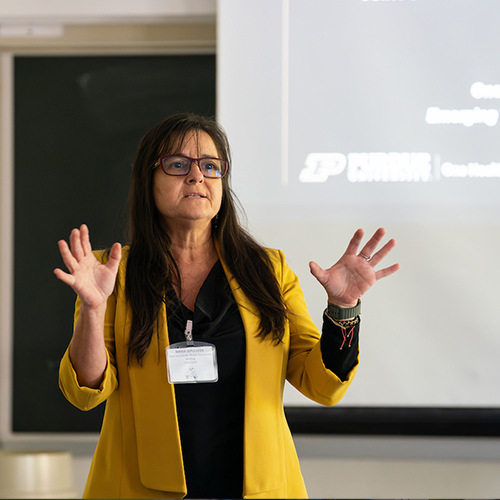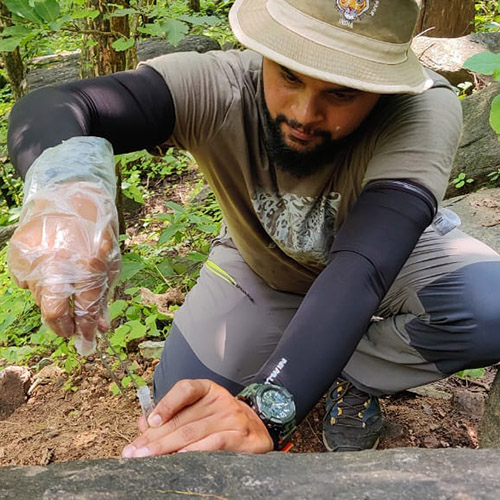FNR Field Reports: Grace Brown Recaps Week 2 of the Study Abroad Trip to Sweden, Finland
Throughout the 2025 Sustainable Natural Resources study abroad course in Sweden and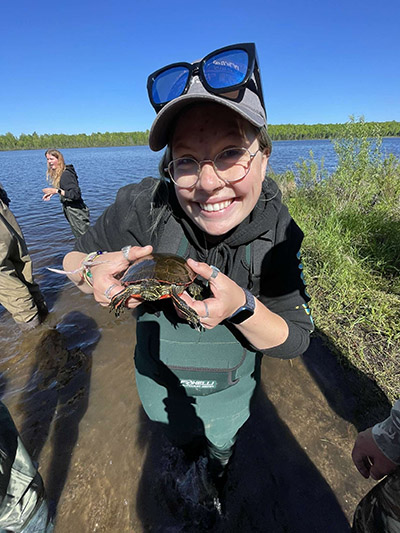 Finland, FNR students will check in to provide weekly updates on the trip highlights. Grace Brown is an upcoming senior majoring in Aquatic Sciences with a concentration in freshwater/marine biology and fisheries. She serves as the leadership chair for the Purdue chapter of Alpha Zeta, a professional agricultural and natural resources fraternity. She also works as a lab technician under Dr. Tomas Höök, where she study the growth rates of largemouth bass in relation to different woody debris environments.
Finland, FNR students will check in to provide weekly updates on the trip highlights. Grace Brown is an upcoming senior majoring in Aquatic Sciences with a concentration in freshwater/marine biology and fisheries. She serves as the leadership chair for the Purdue chapter of Alpha Zeta, a professional agricultural and natural resources fraternity. She also works as a lab technician under Dr. Tomas Höök, where she study the growth rates of largemouth bass in relation to different woody debris environments.
During the three-week Sustainable Natural Resources study abroad course students will examine natural resources broadly defined, including forestry, fisheries, wildlife, agriculture, mining, outdoor recreation, and urban sustainability. They will define, discover, and document examples where sustainability of resource use matters. The course explores the effect of terrain, climate, vegetation, faunal assemblages, social structures and technologies on natural resource use. FNR 46000 is a collaboration of Purdue University, North Carolina State University, and the Swedish University of Agricultural Sciences. American and Swedish students work together to research issues in resource management.
The course is co-taught by FNR's Drs. Tomas Hook and Doug Jacobs as well as other instructors from NC State and SLU.
Grace Brown provides her recap of Week 2 of the trip below.
Our bus took us to the Åland fish hatchery in Guttorp where we got to learn about how the Åland island waters are largely privately owned. It was incredibly interesting learning about how local conservation initiatives for local fish stocks and sustainability are implemented with this kind of management technique."
Monday, June 30th – Åland Hunting and Fishing Museum
A couple of my friends and I started the morning with a coffee run to Espresso House in town, then caught the local bus around 11:00 AM to visit the Åland Hunting and Fishing Museum. The exhibits gave us a deeper understanding of how important seal hunting, herring fishing, and waterfowl hunting/egg harvesting were to local life and survival in the archipelago. Everyone also got to look at the gift shop, which is always a plus! Afterward, we explored the nearby fishing village, which included old fishing boats and many preserved houses to exhibit what a village at the time looked like. While we waited to catch the bust back into town we got to hike/explore the nearby area and a friend of mine, and I stumbled across a tribute to their local Elvis Impersonator which I thought was super interesting.
Back in town we went shopping in downtown Åland and I stumbled upon a little food truck selling chicken shawarma wraps. I don’t know if it was how hungry I was or just how amazing the wrap was, but it has been one of the best things I’ve eaten thus far! The rest of the evening was free for us to relax, eat, and catch up with each other.
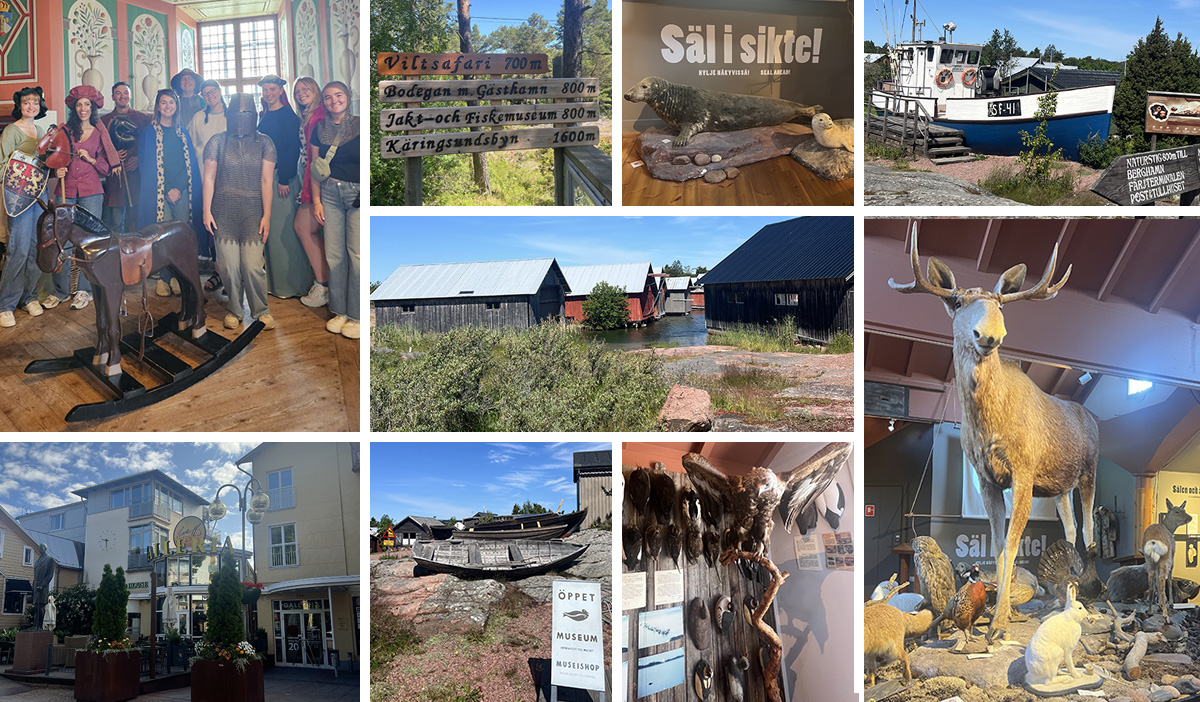
Tuesday, July 1st – Åland historical museum and visit to Kastelholm
This morning, we walked to the Åland Museum of Cultural History in Mariehamn. The museum offered a fascinating overview of Åland’s development over time. From prehistoric settlement and medieval trade to modern autonomy each exhibit really seemed to tell a story. Through exhibits on local traditions, daily life, and political history, we got a deeper understanding of how Åland’s identity has been shaped by both Swedish and Finnish influences. This museum happens to be attached to the Åland art museum where we got to see both traditional and contemporary art. Karl Emanuel Jansson is one of the most notable artists from Åland and he painted my favorite piece in the museum, the Åland Peasant Bride. This painting truly blew me away, specifically the attention to detail within even the tiny chain links in her necklaces. Every part of the painting was truly breathtaking.
In the afternoon, we took the local bus to Kastelholm, a 14th-century castle located on the eastern side of the main island. The castle was first recognized in historical records in 1388 and was Åland’s only medieval castle. We went on a walking tour and got a glimpse at how everyone from royalty to peasants lived within the island. Plus, we got to learn about the history of the castle and how it burnt down not one but three times over the course of it’s existence. I guess preventative fire measures weren’t so big in the 14th-century. We ended the tour with a little bit of Medieval dress-up because nobody is too old for that ( I mean come on we all look pretty awesome don’t you think?). Nearby, we also visited the open-air museum Jan Karlsgården, which featured traditional 19th-century Åland farm buildings. Near the open-air museum was an old jailhouse which we got to tour and some of us even got locked up for a few minutes! Then we got back on the bus and headed back into Mariehamn where I picked up some of the best pasta to go and met up with friends back at the hostel for dinner. All in all today was my favorite day thus far, I never thought I’d be able to see a castle in real life and it did not disappoint.
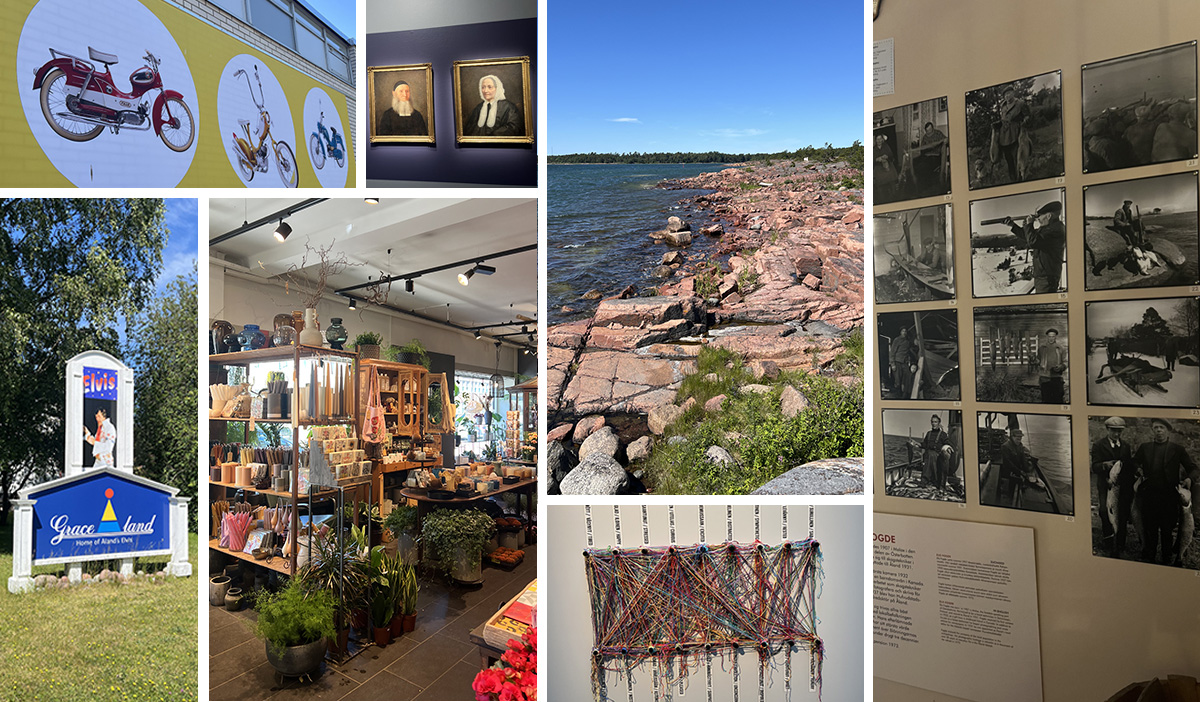
Wednesday, July 2nd – Husö Field Station and Åland Fish Hatchery
Today we boarded a charter bus which took us to the Husö Field Station, about 30 minutes away from where we were staying. Once we got there our guide took us to the main research building where we sat in on two of his presentations. The first one about the studies that Åbo Akademi University conducts at this station ranging from food web analyses to climate change analyses and the second being about his work within the local conservation and sustainability group. It was fascinating seeing how one person can have such a large impact within this small community and his true drive to work towards sustainability within Åland. We also learned a little bit about the history of the field station and how a well accomplished artist, Sigrid Maria Granfelt (1868-1942), originally bought the land in 1910 and then designed and build the iconic yellow house the station is known for. We got to tour this house which still showcases some of her art which included anything from breathtaking paintings to carpentry.
Next, our bus took us to the Åland fish hatchery in Guttorp where we got to learn about how the Åland island waters are largely privately owned. Fishing rights ownership is tied to land ownership which means these owners are the ones in charge of the access and management of their body of water. It was incredibly interesting learning about how local conservation initiatives for local fish stocks and sustainability are implemented with this kind of management technique. Lastly, we ended our day talking to a local sportfishing guide who shed a little bit of light on recreational fishing management, fishing’s effects on local tourism, and ways to keep sustainable environments while still being able to fish. He also gave us all restaurant suggestions which was a huge plus since he is native to Mariehamn.
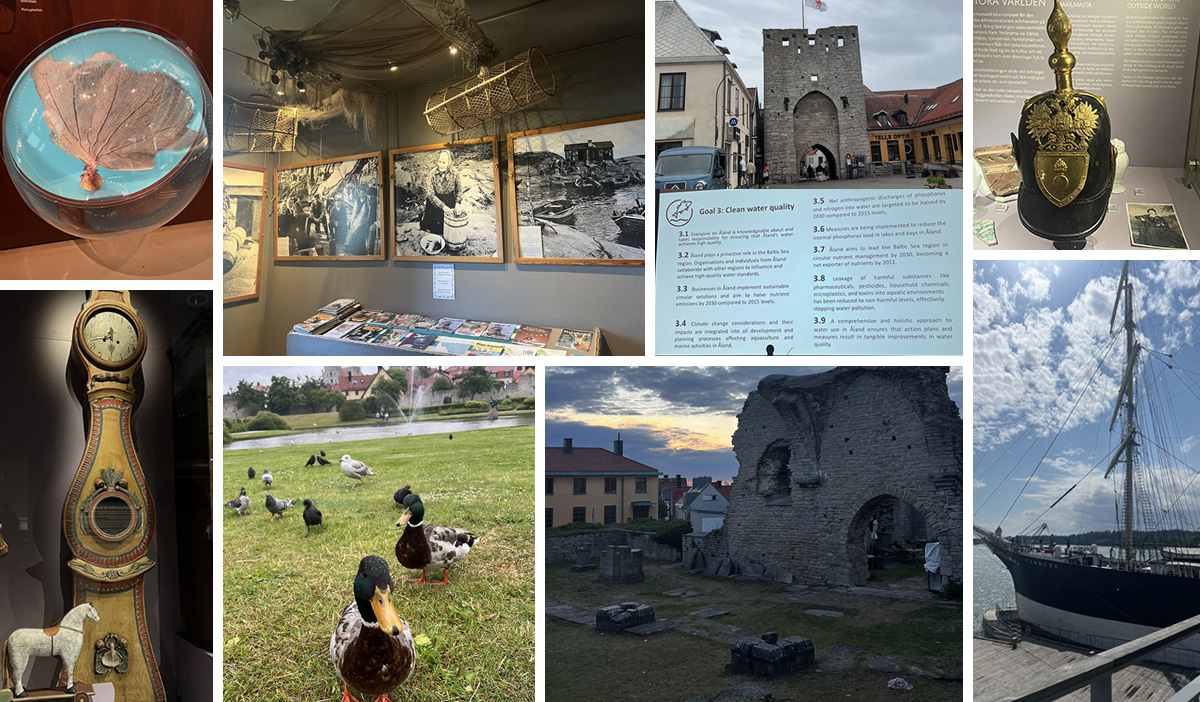
Thursday, July 3rd – Åland Maritime Museum, Museum Ship Pommern, and overnight ferry to Visby, Gotland
This morning, we met with a representative from Bärkraft Åland, an organization focused on sustainability across the islands. She walked us through Åland’s Development and Sustainability Agenda, which outlines seven long-term ranging from the attractiveness of the community from the perspective of tourists to the sustainability of local consumption and production. It was interesting to hear how the agenda was shaped with input from the community, making it feel very grounded in local values while still aligning with global sustainability goals. At the end of the presentation, we got to see how well each of the goals were being achieved, and although not on the exact timeline they wanted it the message is still seemingly getting across to the public.
After lunch, we visited the Åland Maritime Museum and the museum ship Pommern. The museum had hands on exhibits and told the story of Åland’s strong connection to sailing and global trade. There was a audio guided tour of the ship which took you through the perspective of multiple different crew members from the early 1900s. It gave a real sense of what life at sea would have been like and showed both the good and the bad sides of being at sea for so long. One of my favorite parts of the entire museum was the exhibit that showcased different skeletons of marine life that was seen on the expeditions. There was also a lot of artwork shown in the museum including some made solely from butterfly wings which were both breathtakingly beautiful and incredibly interesting. After leaving the museum at 5 we had about 6 hours until we could pick up our luggage and head to the ferry dock where we boarded a 10-hour ferry to Gotland, Sweden. In the meantime, we walked back to our hostel to play games and on the way back we saw a very cute cat, definitely the highlight of my day!
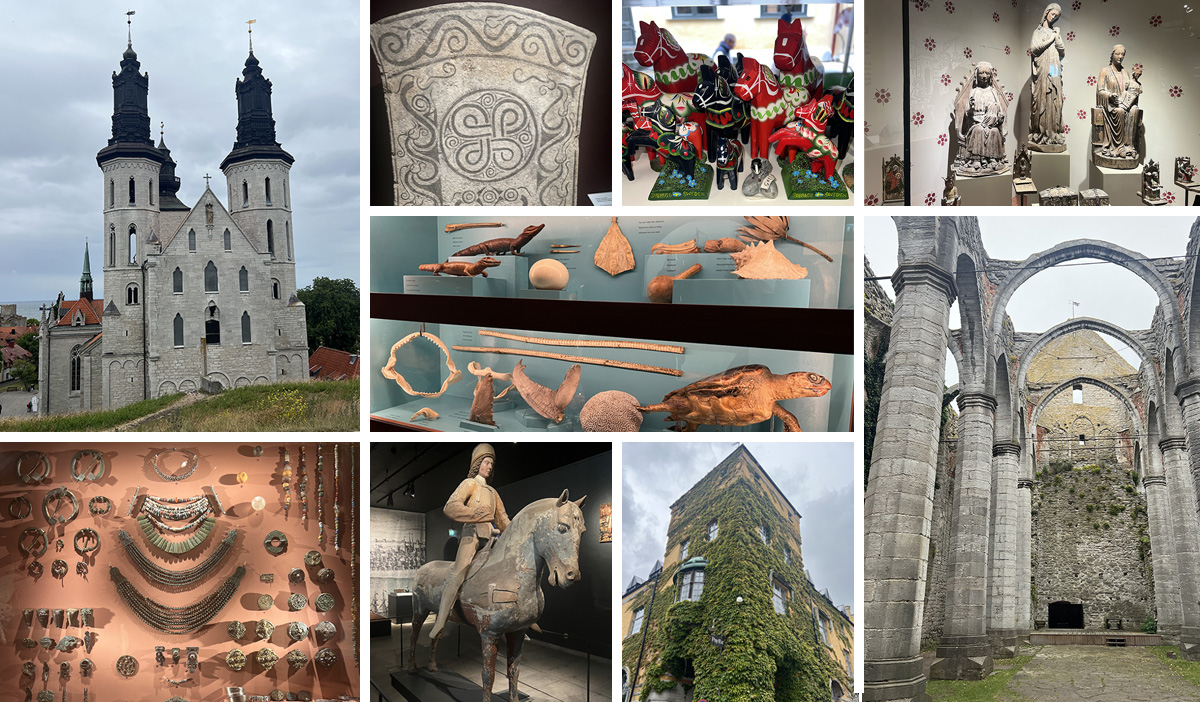
Friday, July 4th – Traveling to Visby and Visby day 1
After a long 10-hour overnight ferry we docked in Visby, a historical town on the island of Gotland, Sweden. Once we got settled into our hostel, we had the rest of the day to grab groceries, relax, and explore because the rest of our time here will be busy. A few of my friends and I went to a McDonalds close to our hostel and it was interesting seeing how even in fast food restaurants they are very particular about their waste management and sorting of your garbage which was cool from a sustainability perspective. After some rest I rented a bike from our hostel, which is about a 15-minute bike ride from the main part of the town and met up with a friend for dinner. After dinner we biked around town and explored the cobblestone streets, flower lined walkways, medieval ruins, all the beautiful houses, and of course we saw the beach. I cannot wait to learn more about the medieval history within the town since I don’t know too much about it now, but I can say it was beautiful!
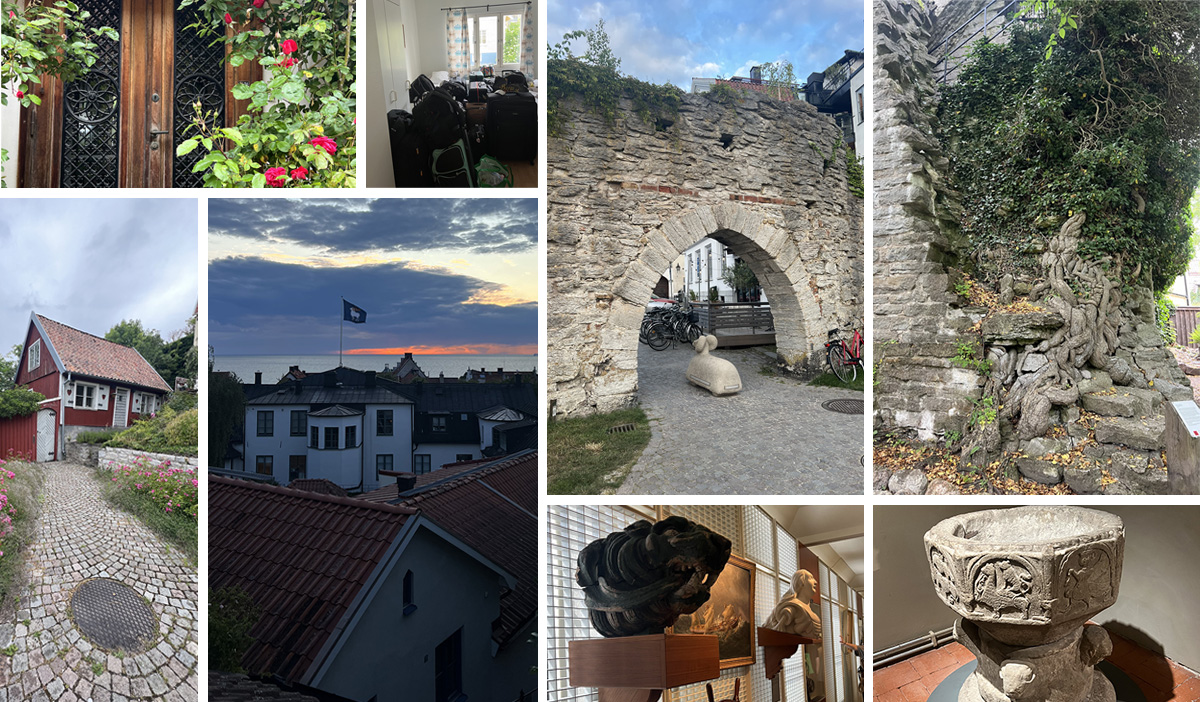
Saturday, July 5th – Guided History Tour and Visby Museum
We started today with a guided history tour of Visby from a local who grew up in Visby. We got some insight on the medieval past and got to see multiple old church ruins and the well-preserved city walls. Our tour guide has a family-owned hotel within the city and gave us a look into some of the ways they are introducing sustainability within their business. At this hotel specifically they have created hanging door signs that say “save a pike” to show that you do not want your room cleaned for the day, and in return the hotel sends a certain amount of money to the local pike conservation program. However, this is just one way they are contributing, as they have also introduced eco-friendly napkins and labels on some of their foods that try and suggest that guests choose the locally provided food options.
Our last stop of the day as a group was the Gotland Museum which gave us a deeper look into the history of medieval trade and the Viking times. It was very interesting to see how this compared to the Åland Museum of Cultural History. After going through the museum a few of my friends and I checked out the local artisan market and shopped around for a while. We ended the night watching grownups and catching up, one of the best ways to end a busy week!




